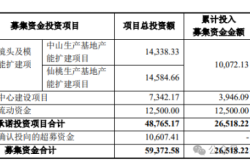"Double 11" Shopping Festival Ends: The AI Revolution in E-Commerce Is Underway
![]() 11/14 2025
11/14 2025
![]() 523
523
To a certain extent, AI's performance in generating conversion data for e-commerce is outstanding.
As the "Double 11" shopping festival concludes, reflecting on this year's major sales event, AI emerges as a key game-changer.
On one hand, various e-commerce platforms are heavily investing in AI. Tmall experienced its first Double 11 with comprehensive AI integration. JD.com introduced the AI architecture system 'Oxygen' and the AI-powered shopping app 'Jingxi'. Douyin E-Commerce explored the use of large AI models for direct product promotion, with Doubao serving as an 'AI shopping guide' that presents product links alongside user responses.
Even Feishu, ByteDance's collaborative office platform, ventured into the e-commerce space, officially joining the Double 11 preparations. Recently, it hosted multiple live streams on "E-Commerce Efficiency Enhancement" to assist merchants in boosting their operational efficiency.
On the other hand, merchants are rapidly adopting AI. Data from Taobao and Tmall indicates that over 5 million merchants utilized AI tools provided by the platforms to support their operations during Double 11. In Feishu's official video account store, its newly launched exclusive courses for the e-commerce industry have already sold 1,370 copies.
E-commerce is emerging as one of the industries profoundly transformed by AI.
01
How is the e-commerce industry leveraging AI?
AI is making a comprehensive intervention in the e-commerce industry at an unprecedented pace. Particularly among merchants, there is a proactive integration of AI across all operational links.
This trend became apparent early this year. Wang Yixuan, Feishu's marketing manager, told Shuzhi Qianxian that after DeepSeek gained popularity, they conducted training sessions to guide users in building applications using Feishu's multi-dimensional tables paired with DeepSeek. Over 60% of the user-created works were related to e-commerce, covering areas such as virtual wardrobe changes and AI assistants for live streams. In subsequent events, e-commerce also yielded the best conversion data. At a March offline sharing session, 90% of the attendees were from the e-commerce industry, with over 80% of the questions during the Q&A session focusing on "how to practically apply AI in e-commerce scenarios."
The primary driving force behind this is the severe homogenization in the current e-commerce landscape. In Yiwu, a popular product can be replicated by numerous similar merchants and featured on their homepage stores the very next day. To avoid price competition, an increasing number of merchants are seeking growth through AI. The industry generally believes that in a homogenized market, even a 1-2% increase in efficiency in any operational link can yield significant benefits.
Currently, many enterprises have already extracted practical value from AI applications throughout the entire e-commerce operational process.
In the preliminary product preparation stage, product selection directly determines sales success. Previously, Liu Shiqi, the owner of a cross-border e-commerce business specializing in "ugly slippers," relied on manually collecting Amazon bestseller data and personal experience for product selection. This approach was time-consuming, labor-intensive, and probabilistic, with new product launches occurring on a quarterly basis.
To accelerate new product launches, he introduced AI to construct a "data collection-AI analysis-trend integration" workflow. AI regularly monitors and collects links to top-brand products, then automatically extracts bestseller information, refines selling points, and summarizes positive and negative reviews using prompts internalized from his experience. It combines these insights with popular elements and hot words from uploaded industry trend tables to produce trendy bestseller selections. The system generates main image prompts and images for marketing platforms, and once data thresholds are met, arranges for factory mold opening. With this process, his new product launch cycle has been reduced to days, and his six-person team has achieved annual sales exceeding 30 million yuan.
In the mid-stage, achieving higher efficiency and lower costs in operations and conversions is another major challenge for e-commerce merchants.
Chengdu Duchangtuan, which provides e-commerce agency services for brands like XGIMI and Switch, pioneered changes in copywriting and image generation scenarios. General Manager Chi Shuai told Shuzhi Qianxian that while various text and image generation tools are already "usable," there is still a significant gap from being "commercially viable." Business personnel are hesitant to use them if they cannot reach the "85-point level" of professional copywriters or designers.
To address this, they invested considerable time in dissecting the detailed experiences of "veterans" into reusable modules, forming executable decision points and encapsulating them. Taking copywriting generation as an example, after the operator selects a product, the system automatically collects data and generates professional copy following a set process.
Chi Shuai stated that these two scenarios are also their earliest AI applications focused on "revenue enhancement." Currently, they are implementing AI applications in a three-step strategy of "revenue enhancement - efficiency improvement - cost reduction," with cases in all three areas. Chi Shuai also mentioned that for functional departments undergoing reform, AI efficiency improvements should first reduce costs, then enhance efficiency, and finally increase revenue; for business departments, the focus should be on increasing revenue first, then enhancing efficiency, and finally reducing costs.
Yuyou Cross-Border, a cross-border e-commerce company, has utilized AI to create a graphic design factory. The system daily captures high-click-rate posters from platforms like Xiaohongshu and Douyin to build a material library. AI analyzes these posters for core strengths and reverse-engineers prompts to extract high-quality design elements. When image generation is needed, AI can individually modify them according to the latest brand requirements to regenerate materials and help avoid prohibited words, saving 2 million yuan in costs annually and improving efficiency by four times.
Another cross-border e-commerce company, Zhiou Furniture, introduced AI into translation scenarios. Its products are listed on platforms like Amazon and Walmart, previously requiring the hiring of multilingual personnel for translation, which was time-consuming and laborious. After introducing AI, the translation error rate is only about 1%, far lower than manual translation, and batch translation is achieved through Feishu's multi-dimensional tables. It is reported that the company now almost entirely entrusts translation work to AI, with only a small team for secondary verification, increasing the speed of listing products across over 200 global sites by 200%.
In the later stages of e-commerce operations, multiple enterprises have adopted AI in after-sales management, public opinion monitoring, and evaluation analysis.
For example, Babycare, a leading maternal and child brand, is using AI to address reverse logistics challenges. While forward logistics management in e-commerce is well-established, reverse logistics such as refunds and abnormal shipment handling lack system support. Previously, Babycare manually processed abnormal shipments, which took over three days and often led to customer loss during major sales events. To address this, they built a reverse logistics monitoring system using Feishu's multi-dimensional tables. After shipments enter the warehouse, photos are uploaded, and AI quickly identifies information such as tracking numbers and addresses to generate processing tables. The system then automatically assigns tasks and notifies responsible personnel based on preset rules, such as different categories and provinces, reducing abnormal shipment processing time to one day and decreasing customer loss rate by 30%.
The beauty brand Zhuben is using AI to label public opinion views on different products and note types, automatically notifying corresponding departments when the number of negative public opinions exceeds warning thresholds. Three Squirrels utilizes AI to analyze sentiment tendencies in evaluations on platforms like Taobao and JD.com, improving efficiency in handling negative reviews by 60%...
02
Feishu's AI Narrative in E-Commerce
Feishu has been promoting 'AI + Multi-Dimensional Tables' as a crucial gateway for enterprises to implement AI. Wang Yixuan, Feishu's marketing manager, recalled that the e-commerce industry's early and enthusiastic adoption of AI made the team keenly aware of the opportunity, judging that e-commerce was likely the industry where this model could most easily achieve PMF (Product-Market Fit).
Thus, starting in March, Feishu has served numerous e-commerce clients through extensive industry events, both online and offline, gradually establishing its core positioning in the e-commerce industry as the "tool for tools."
Simply put, it connects platform tools like Douyin, Taobao, and JD.com while integrating AI capabilities to help merchants transition from "data silos" to "omnichannel operations" and from "experience-dependent" to "data + AI-driven," ultimately becoming the "infrastructure for e-commerce operations." Feishu believes that the separation of AI tools and business tools leads to AI being detached from business operations, whereas multi-dimensional tables, serving as "business tools and AI enablers," allow AI to be naturally embedded in daily operations, enabling merchants to achieve efficiency leaps without altering their original work methods.
This logic is primarily implemented through features like "AI Columns" and "Field Shortcuts": When users create a new column, they can directly invoke DeepSeek for copywriting generation, Jimeng 4.0 for image generation, and Kimi for image information extraction through "Field Shortcuts." Various practical AI tools developed by developers can also be directly invoked by creating a new column, integrating AI capabilities into essential steps of table usage.
It is revealed that currently, e-commerce enterprises from multiple segments, such as Three Squirrels, Proya, JNBY, and Yaoji King, have applied these features in scenarios like live stream review, customer feedback processing, product image generation, influencer management, bestseller analysis, and public opinion monitoring.
Take the bestseller analysis tool as an example. It can batch extract the verbatim transcripts of live stream scripts from uploaded videos, then have DeepSeek analyze the reasons for the video's popularity and output a bestseller formula, automatically generating a Feishu document. When users need to output bestseller copy, after inputting information such as products and promotions and associating it with the bestseller formula in another table, AI can generate bestseller copy within that framework, reducing output errors.
Industry observers note that the core selling point of AI + Multi-Dimensional Tables in e-commerce scenarios also lies in adapting to the five standardized links across all scenarios: collecting data from various platform systems to multi-dimensional tables through RPA and APIs for data integration; analyzing data using AI workflows within the tables; generating required content through AI columns; visualizing results and progress through dashboards; and finally, pushing them to Feishu or corresponding platforms through workflows, forming a complete data closed loop.
For example, in the "omnichannel data integration" scenario, e-commerce merchants often face challenges such as data being scattered across multiple platform backends, difficulty in obtaining specific dimensional data like net profit, inventory turnover rate, and accessory matching rate, and delayed feedback. Chengdu Duchangtuan once suffered from this, incurring losses exceeding 18 million yuan in a year. To address this, they integrated multi-platform data based on multi-dimensional tables, built custom dashboards, and achieved real-time presentation of multidimensional data, real-time feedback on net profit per product, and automatic allocation of advertising costs.
However, AI + Multi-Dimensional Tables also have their limitations. As a bulk AI workflow construction tool, it is more suitable for scenarios with high volume requirements and relatively lenient quality standards. While some teams can achieve both high volume and quality, it requires significant time investment to embed numerous tools into each column of multi-dimensional tables to create high-quality 85-point AI workflows. Wang Yixuan stated that most merchants, after getting started, can build 60-70 point AI workflows in multi-dimensional tables, which already meet their needs.
Additionally, while AI + Multi-Dimensional Tables have been simplified to a 0-code, table-based format for the e-commerce industry, there is still an entry barrier. The key lies in finding individuals who understand the business, embrace new technologies, can clearly articulate business processes, and construct corresponding AI workflows. To address this, Feishu has proposed a three-tier profile to assist enterprises in finding the right talent.
Feishu is also making efforts in multiple aspects to lower the entry barrier for e-commerce users to implement AI. For small and medium-sized clients, it provides bulk services like online live stream teaching to facilitate rapid implementation. At the product level, it has accumulated a large number of standard templates for different scenarios and offers a scenario menu or ranking sorted by business value, implementation depth, and difficulty, enabling merchants to choose suitable scenarios and quickly "copy the homework."
An increasing number of leading enterprises are also abstracting and precipitating their best practices into multi-dimensional tables, such as Jiao Ge Peng You's bestseller fission and customer service analysis practices, Hefeng Yiyang's influencer management practices, Dedao's live stream review and private domain operation practices, and Atour Group's influencer operation practices.
"These best practices empower more enterprises in a templated manner through multi-dimensional tables, enabling them to become new leading enterprises. The new practices are then abstracted, forming a virtuous cycle," Wang Yixuan said.







